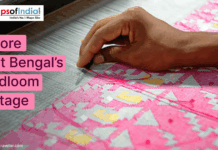On May 22, 2025, Aditya Birla Fashion and Retail Ltd. (ABFRL) changed the way its business is set up by separating its Madura Fashion & Lifestyle (MFL) division into a new company called Aditya Birla Lifestyle Brands Ltd. (ABLBL), which is now listed on the stock market as a separate business. (ABLBL). This move is a big step for the Indian fashion industry and changes how both companies will operate going forward.
The Genesis of the Demerger
The reason for demerging was to remove confusion in daily operations and create benefits for shareholders. Over 70% of ABFRL’s total sales in 2020 was earned by their Madura Fashion business which consists of brands like Louis Philippe, Van Heusen, Allen Solly, Peter England, American Eagle, Forever 21 and Reebok. SHIFT still led the industry, but it struggled with lower interest and greater investments for specific brands which led to reduced profits. It was expected that following a demerger, the two companies would increase their focus on core businesses and aim for independent development.
The Structure Post-Demerger
Aditya Birla Lifestyle Brands Ltd. (ABLBL)
Many of the former’s legacy lifestyle brands have a place at ABLBL now such as:
- Louis Philippe
- Van Heusen
- Allen Solly
- Peter England
- American Eagle
- Forever 21
- Reebok
- Van Heusen Innerwear
This portfolio shows ABLBL achieving leadership in both premium and mass-market fashion spaces.
Aditya Birla Fashion and Retail Ltd. (ABFRL)
The main part of ABFRL is now focused on:
- Pantaloons (value fashion)
- Style Up (fast fashion)
- Sabyasachi, Shantanu & Nikhil, House of Masaba, Tarun Tahiliani (designer ethnic wear)
- TASVA, TCNS Brands, Jaypore (premium ethnic wear)
- Galeries Lafayette, Christian Louboutin (luxury retail)
- The Collective & Mono Brands (super premium)
- Bewakoof, The Indian Garage Co, Wrogn, Urbano, Veirdo, Nobero, Juneberry (digital-first brands)
Having many brands in its portfolio, ABFRL can satisfy both those seeking affordable and those seeking expensive clothing.
Financial Implications and Shareholder Impact
The demerger was done through a plan approved by the National Company Law Tribunal (NCLT). According to this plan, for every ABFRL share a person owned, they received one new share of ABLBL, while still keeping their original ABFRL shares.
ABFRL shares saw a drop in price of fully 67% on the May 22, 2025 record date, making the closing price ₹88.80 on NSE. This move represents how MFL is breaking away from ABFRL and now has a valuation based on the rest of the business. Although the company’s net income has fallen, the share price in ABLBL has increased, leaving shareholders unchanged.
Strategic Rationale Behind the Demerger
Unlocking Value
A demerger allows each group to set its own plans for growth, update its capital arrangements and focus on what matters to it most. After the demerger, ABFRL plans to secure ₹2,500 crore through equity over the next 12 months to support its businesses and improve its balance sheet. All members of the promoter group are committed to backing this equity offering.
Enhanced Focus
With lifestyle brands in top shape, ABLBL is better able to benefit from its strong presence in the market. ABFRL could grow its value, ethnic, luxury and digital-first groups to attract and please a greater number of consumers.
Market Perception
Because of the demerger, investors can examine each company individually and invite investors that are most interested in their areas of business. Because of this split, both companies could experience better pricing and higher value.
Industry Implications and Competitive Landscape
By demerging the ABFRL, the Aditya Birla Group’s internal structure is changed and the move also influences the broader Indian fashion and retail sector. Reliance Retail, Tata’s Trent and international brands H&M and Zara will be following ABLBL and the new ABFRL as they both chart new paths. Because they are apart, companies can move more quickly to handle consumer habits, technology shifts and the rise of digital and omnichannel selling. Also, the process could establish a precedent, encouraging other large companies to try the same approach. Because India’s retail sector is becoming more sophisticated, ABFRL’s action could be a turning point for corporate strategy in the field.
Investor Sentiment and Market Reactions
Investors have shown differing views on the ABFRL demerger, being cautious at the same time as feeling hopeful. Although ABFRL’s share price fell at the time of the record date, many analysts are still cheerful about the company’s future. Each separate entity can decide on capital spending, tailor its marketing choices and ensure more effective management. Assessing both risk and the worth of each business unit may be simpler for institutional investors when companies are separated. As both companies show strong financial results, investor confidence is believed to stabilize and could experience even more growth, mainly when the numbers from the demerger are in line with the entities’ predetermined objectives.
Future Outlook
Both ABFRL and ABLBL have big plans for the future. ABFRL aims to grow three times bigger by focusing on value fashion, ethnic wear, luxury brands, and online-first labels. On the other hand, ABLBL wants to more than double its business and triple its cash profits by building on the strength of its popular and well-established brands.
Conclusion
Aditya Birla Fashion & Retail Ltd. has split its Madura Fashion & Lifestyle segment into Aditya Birla Lifestyle Brands Ltd. which will streamline their activities and increase value for investors. Focusing on what each entity does best and letting them grow separately with the demerger makes it easier for both companies to profit from changes in the Indian fashion business. Their markets and strategies will shift, so success will come from their adaptability, creativity and efficient strategy execution.




